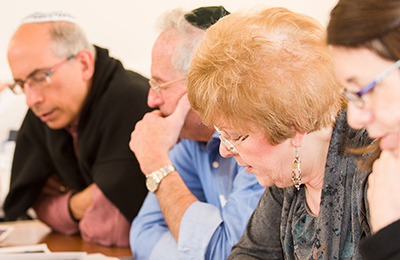The Abbreviated Repetition of the Amidah?

Responsum:The sages of the Mishnah (Rosh Hashanah 4:9 and parallels) ruled that the main purpose of the loud repetition of the Amidah was to allow a person who did not know how to recite the Amidah to fulfill his obligation. However, once written prayer books developed in the geonic period, the original reason diminished in importance and the main purpose of the loud repetition became to enable the congregation to recite the kedushah (Tur Orah Haim 124).
With this information in mind, we can understand the seven different methods of abbreviating the Amidah, which developed throughout the generations:
1) The congregation recites the entire Amidah silently, after which the cantor repeats the Amidah aloud until “ha-el hakadosh” and stops. This custom is mentioned by Rav Sherira and Rav Hai Gaon and was practiced at minchah when time was short.
2) The congregation does not recite the silent Amidah at all, but rather the cantor recites the Amidah aloud at the outset. This custom was instituted by Maimonides in Egypt and survived for hundreds of years until it was abolished by the Radbaz. It was practiced at minchah when time was short and at shaharit and musaf on Shabbat and festivals all year long.
3) The cantor recites the Amidah aloud until “hael hakadosh” with the congregation reciting along. The middle blessings are recited silently. The cantor then recites the final three blessings aloud including birkat kohanim (in Shaharit). This custom is mentioned by many Sephardic authorities beginning in the sixteenth century and was practiced at minchah all year long “lekhatehilah” and on other occasions when time was short.
4) The cantor recites the Amidah aloud until “hael hakadosh”, with the congregation reciting along. The rest of the blessings are recited silently. This custom is also mentioned by many Sephardic authorities beginning in the sixteenth century and was practiced at minchah all year long “lekhathila”.
5) This custom is identical to No. 4 except that one member of the congregation is appointed to answer “Amen” after the first three blessings. This custom is mentioned by Rabbi Jacob Moellin (Ashkenaz, d. 1427) and was practiced at minchah when time was short.
6) The cantor recites the Amidah aloud until “Modim” with the congregation reciting along. The rest of the blessings are recited silently. This custom is mentioned by Rabbi Yosef Teomim (d. 1792) and others and was practiced at minchah when time was short.
7) This custom is similar to No. 4 except that instead of reciting the first three blessings along with the cantor, the congregation answers “Amen” and Kedushah and then recites the entire Amidah silently. This custom is mentioned by Rabbi Yomtov Lipmann Heller (d. 1654) and others and was practiced at minchah when time was short.
Now let us analyze these customs and determine which are appropriate for today. The first custom, of the Geonim, is not aesthetic and that is probably why it died out. The fifth custom, of Rabbi Jacob Moellin, was never really accepted by “kelal yisrael” and does not hold up to careful scrutiny. The sixth custom, of Rabbi Yosef Teomim, is also difficult to fathom. Therefore, the other four customs can be used where appropriate.
Custom No. 2 is appropriate for beginners who do not know how to pray alone. Custom No. 3 is appropriate when there is a desire to shorten the repetition, but it is not a true “she’at hadehak”. Custom No. 4 is appropriate for minchah when people are in a big hurry or the hour is late. Custom No. 7 is appropriate for minchah, but it should be stressed that it is forbidden during shaharit because one must adjoin “geulah” (the blessing for redemption) to the Amidah.
Custom No. 4 is the most popular custom. However, it is not recommended to follow this custom at every service all year long because this gives the congregation the feeling of rushing through the prayers.
In any case, we have seen that there are four recommended methods of abbreviating the Amidah. Every local rabbi may use one or more methods when needed according




